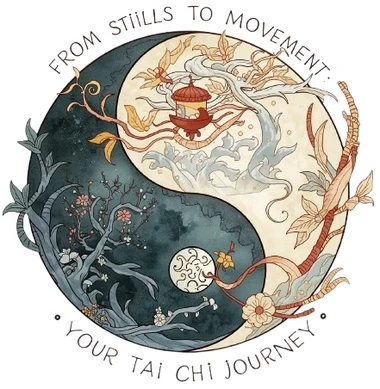Alright, folks. Let's settle this. You walk into a park, see five different Taiji groups practicing, and you wonder—what’s really the difference? I’ve been digging into the five major family styles—Chen, Yang, Wu,武, and Sun—and the nuances are fascinating. It’s not just "slow" vs "fast." It’s a whole world of philosophy, body mechanics, and combat strategy hidden in those flowing forms.
So, let's break them down.
Chen Style: This is the granddaddy. It’s raw and powerful. Think explosive "fajin," low stances, and that signature coiling silk energy. It’s got soft, continuous movements in its first routine and then shocks you with powerful, fast strikes in the second (Cannon Fist). You feel the martial roots here, deeply connected to 【The Chen Tai Chi Legacy: From Chenjiagou Village to a Global Cultural Treasure】. It’s for those who want to sweat and feel the power, not just meditate.
Yang Style: The most popular one globally. It’s the graceful, expansive style you probably picture when you think of Taiji. Movements are big, slow, and even-paced. It’s all about cultivating peace, improving balance, and gentle health, truly embodying the principles of 【Yang Style Tai Chi: The Graceful Path to Health and Harmony】. Perfect for beginners, rehab, or anyone wanting to de-stress without the high-intensity demands of Chen.
Wu Style: Not to be confused with the other Wu (武). This one is all about softness and subtlety. The posture is "leaning," yet perfectly balanced—"upright within the slant." The steps are smaller, the movements incredibly refined. It’s a masterclass in "yielding" and is famous for its push-hands applications, specializing in using an opponent's strength against them. If you're fascinated by this approach, you can dive deeper into 【Wu Style Tai Chi: The Art of Softness, Stability, and Smart Self-Defense】. A thinker's art.
武式 (Wu/Hao Style): Often called the "scholar's boxing." This is compact, precise, and efficient. No large, flowing gestures. The framework is small, the movements are strict, and the focus is intensely internal—on "qi潜转" (internal energy circulation) and the minute transitions between opening and closing. It's less about show and all about sophisticated, close-quarters body control.
Sun Style: The blender. It seamlessly merges Taiji with Xingyi's direct force and Bagua's agile footwork. The signature is the "live-step" method—feet constantly following hands, advancing and retreating in smooth, connected steps. It feels incredibly fluid and integrated. Ideal for someone who appreciates the links between internal arts and wants a more dynamic, mobile practice.
So, which one resonates with you? Are you drawn to the power of Chen, the grace of Yang, the softness of Wu, the precision of 武, or the flow of Sun? Share your experience—what does your style feel like in your body?
So, let's break them down.
Chen Style: This is the granddaddy. It’s raw and powerful. Think explosive "fajin," low stances, and that signature coiling silk energy. It’s got soft, continuous movements in its first routine and then shocks you with powerful, fast strikes in the second (Cannon Fist). You feel the martial roots here, deeply connected to 【The Chen Tai Chi Legacy: From Chenjiagou Village to a Global Cultural Treasure】. It’s for those who want to sweat and feel the power, not just meditate.
Yang Style: The most popular one globally. It’s the graceful, expansive style you probably picture when you think of Taiji. Movements are big, slow, and even-paced. It’s all about cultivating peace, improving balance, and gentle health, truly embodying the principles of 【Yang Style Tai Chi: The Graceful Path to Health and Harmony】. Perfect for beginners, rehab, or anyone wanting to de-stress without the high-intensity demands of Chen.
Wu Style: Not to be confused with the other Wu (武). This one is all about softness and subtlety. The posture is "leaning," yet perfectly balanced—"upright within the slant." The steps are smaller, the movements incredibly refined. It’s a masterclass in "yielding" and is famous for its push-hands applications, specializing in using an opponent's strength against them. If you're fascinated by this approach, you can dive deeper into 【Wu Style Tai Chi: The Art of Softness, Stability, and Smart Self-Defense】. A thinker's art.
武式 (Wu/Hao Style): Often called the "scholar's boxing." This is compact, precise, and efficient. No large, flowing gestures. The framework is small, the movements are strict, and the focus is intensely internal—on "qi潜转" (internal energy circulation) and the minute transitions between opening and closing. It's less about show and all about sophisticated, close-quarters body control.
Sun Style: The blender. It seamlessly merges Taiji with Xingyi's direct force and Bagua's agile footwork. The signature is the "live-step" method—feet constantly following hands, advancing and retreating in smooth, connected steps. It feels incredibly fluid and integrated. Ideal for someone who appreciates the links between internal arts and wants a more dynamic, mobile practice.
So, which one resonates with you? Are you drawn to the power of Chen, the grace of Yang, the softness of Wu, the precision of 武, or the flow of Sun? Share your experience—what does your style feel like in your body?
3
